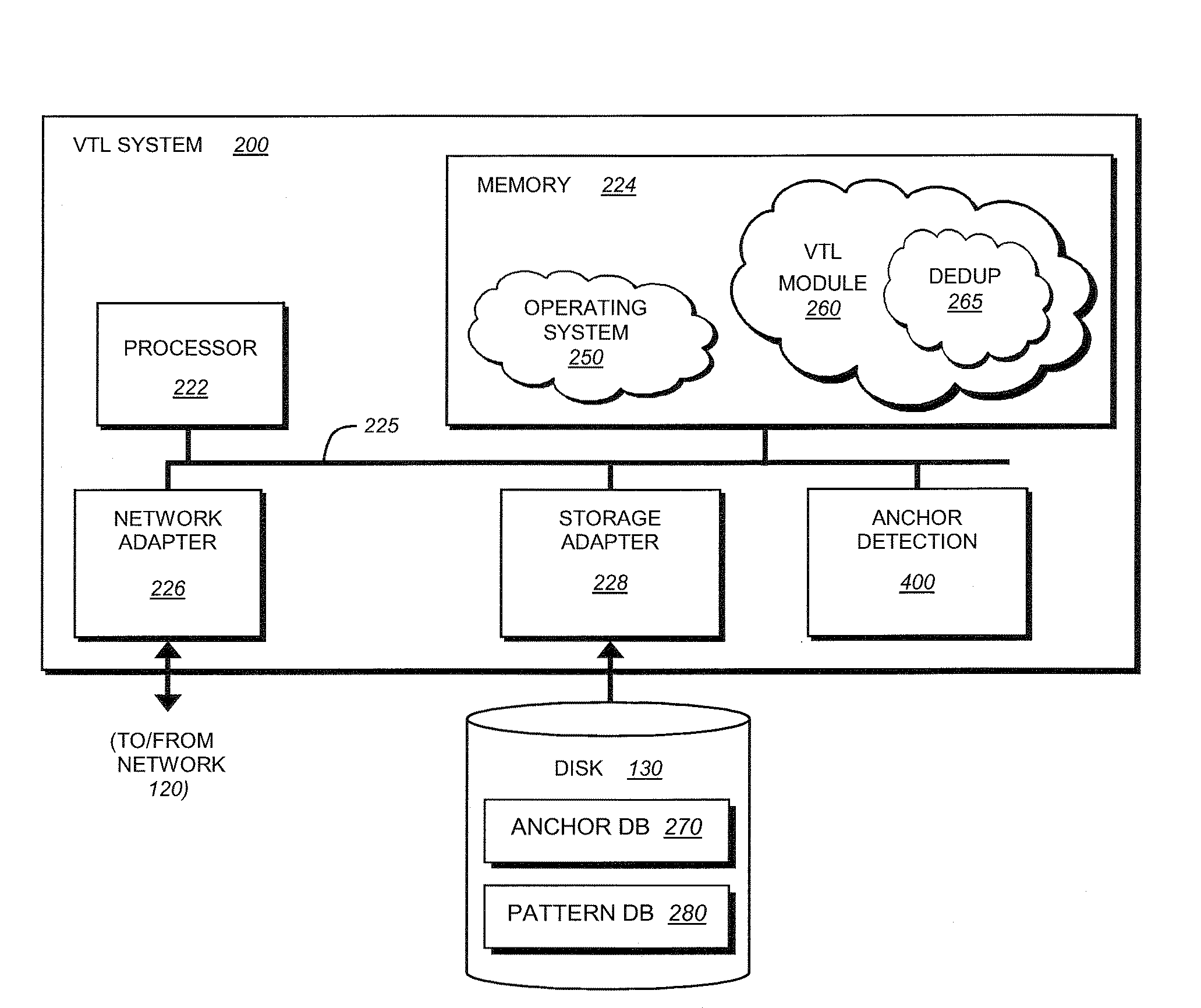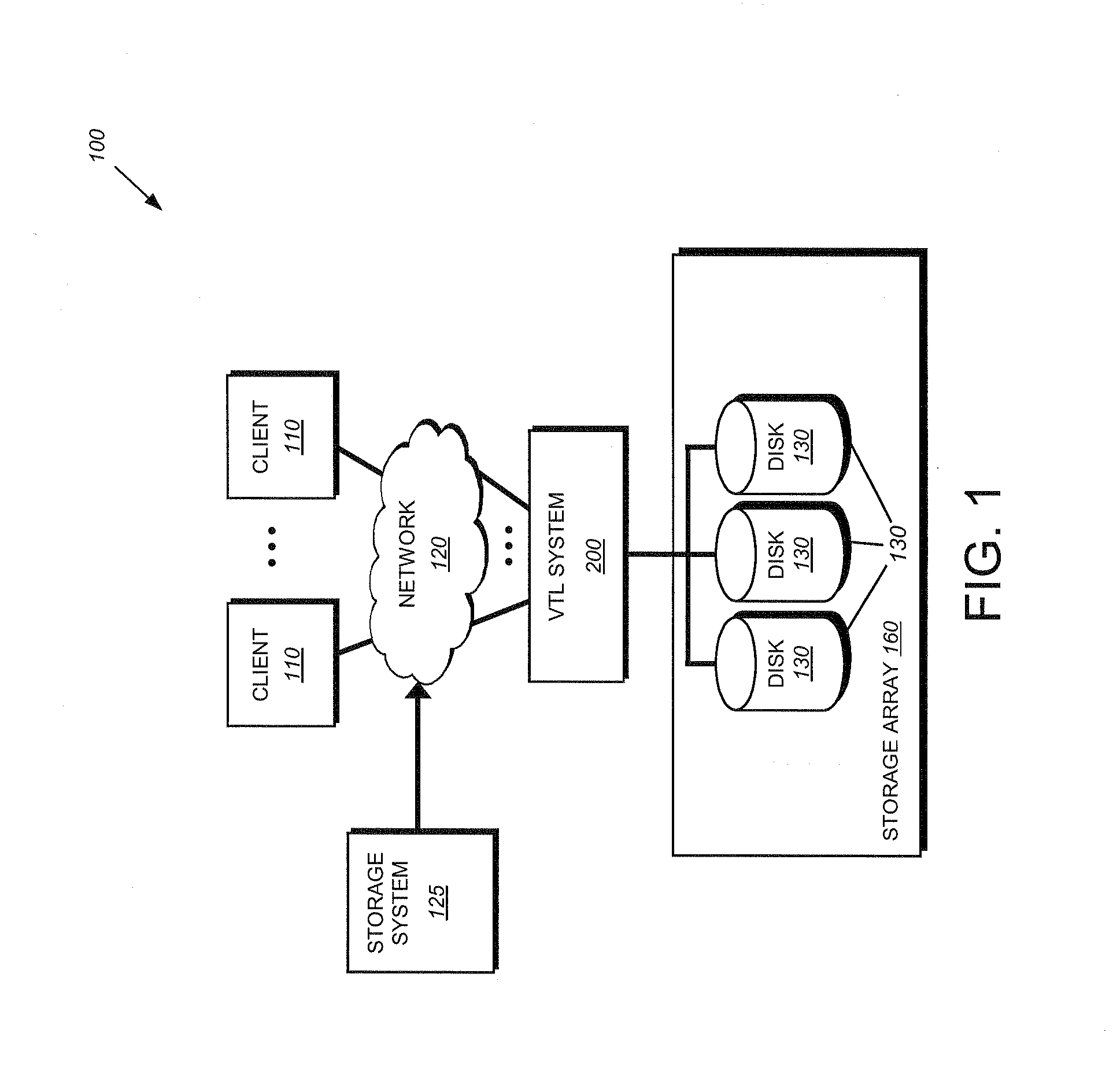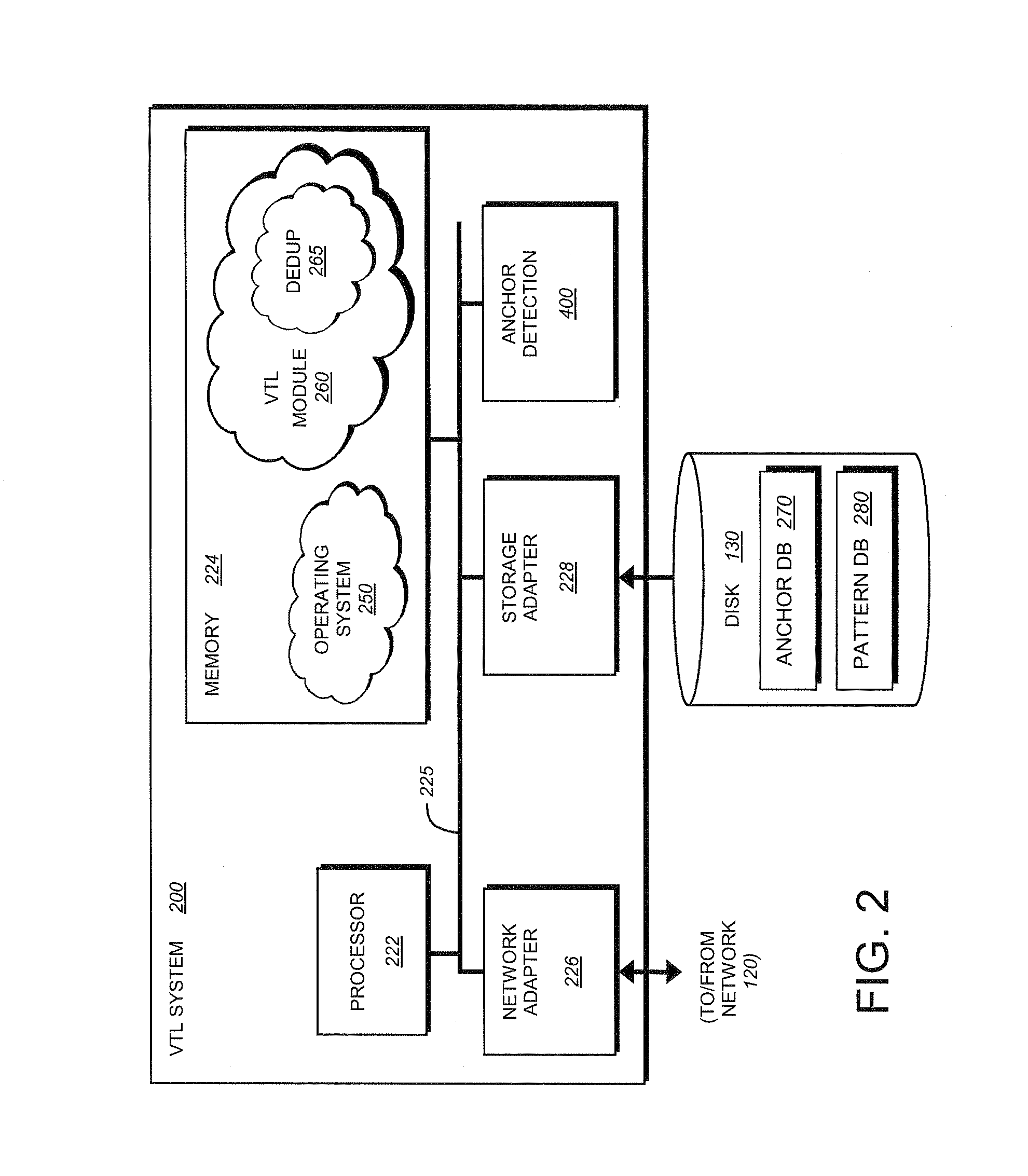System and method for accelerating anchor point detection
a technology of anchor point detection and system, applied in the field of data storage compression, can solve the problems of inefficient consumption of storage space on the vtl system, slow data access rate and added requirements for managing a large number of physical tapes, and reduce the load on the main processor of the system
- Summary
- Abstract
- Description
- Claims
- Application Information
AI Technical Summary
Benefits of technology
Problems solved by technology
Method used
Image
Examples
Embodiment Construction
[0015]A. Storage System Environment
[0016]FIG. 1 is a schematic block diagram of a storage system environment 100 that may be advantageously used with the present invention. The storage system environment 100 comprises a storage system 125 interconnected with a plurality of clients 110 by network 120. Illustratively, the network 120 may be embodied as an Ethernet network or a Fibre Channel (FC) network. Also interconnected with the network 120 is a virtual tape library (VTL) system 200 that illustratively implements the data de-duplication technique of the present invention. The VTL system 200 is operatively connected to one or more storage devices, such as disks 130, organized as a storage array 160.
[0017]In operation, the storage system 125 services data access requests from the clients 110. Each client 110 may be a general-purpose computer configured to execute applications and interact with the storage system 125 in accordance with a client / server model of information delivery. T...
PUM
 Login to View More
Login to View More Abstract
Description
Claims
Application Information
 Login to View More
Login to View More - R&D
- Intellectual Property
- Life Sciences
- Materials
- Tech Scout
- Unparalleled Data Quality
- Higher Quality Content
- 60% Fewer Hallucinations
Browse by: Latest US Patents, China's latest patents, Technical Efficacy Thesaurus, Application Domain, Technology Topic, Popular Technical Reports.
© 2025 PatSnap. All rights reserved.Legal|Privacy policy|Modern Slavery Act Transparency Statement|Sitemap|About US| Contact US: help@patsnap.com



